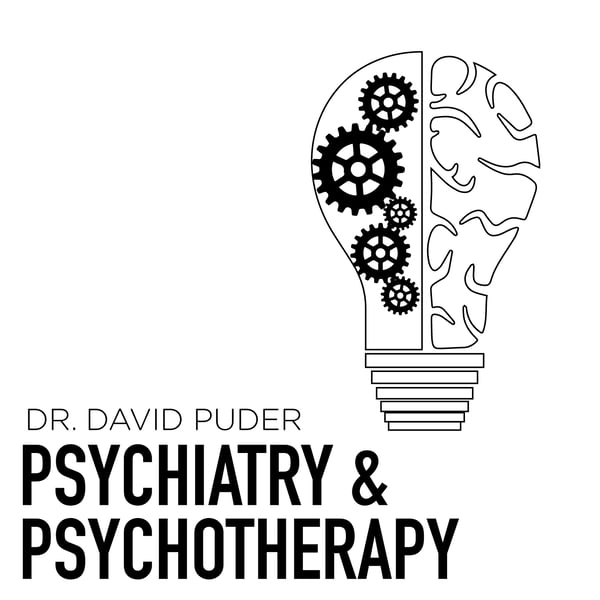The History and Use of Antipsychotics
Psychiatry & Psychotherapy Podcast
David J Puder
4.8 • 1.3K Ratings
🗓️ 19 June 2018
⏱️ 45 minutes
🧾️ Download transcript
Summary
In the latest podcast, Dr. Cummings and I talked about antipsychotics, the particular branch of psychopharmacology that deals with medicines that treat psychotic experiences and other mental disorders, such as:
Schizophrenia
Severe depression
Severe anxiety
Bipolar disorder
Psychosis exhibiting hallucinations and delusions
For blog and detailed notes and citations from the episode: here
Join David on Instagram: dr.davidpuder
Twitter: @DavidPuder
Transcript
Click on a timestamp to play from that location
| 0:00.0 | Welcome to the Psychiatry and Psychotherapy Podcast. The podcast to help you in your journey |
| 0:06.0 | towards becoming a wise, empathic, genuine and connected mental health professional. |
| 0:11.0 | I'm your host, Dr. David Puder, a psychiatrist who splits his time practicing psychopharmacology, |
| 0:17.0 | individual and group psychotherapy, medical director of a day treatment program, |
| 0:21.0 | medical education research, and teaching residents and medical students. |
| 0:30.0 | Okay, we are live and I am back with Dr. Michael Cummings. |
| 0:40.0 | And today we are going to depart to sort of a review of psychopharmacology. |
| 0:47.0 | We're going to be diving into schizophrenia today and the history of anti-psychotics |
| 0:53.0 | and history of schizophrenia and Dr. Cummings, welcome to the show. |
| 0:57.0 | Thank you very much. I'm glad to be back and indeed ready to talk about how anti-psychotics |
| 1:04.0 | came into existence and what has evolved since their introduction. |
| 1:12.0 | The beginning point actually goes all the way back to around 1933. |
| 1:18.0 | In France, there was a push to develop anti-histamines as treatments. |
| 1:25.0 | And that led to a line of research that ultimately by 1947 led to the introduction of promethazine, |
| 1:35.0 | which produced sedation and calmness in animal models, was not very highly effective in people, |
| 1:44.0 | but did lead to the thought that it might provide a preoperative way to calm people down. |
| 1:52.0 | That in turn, however, led to Paul Serpentier in 1950 looking at derivatives, |
| 2:00.0 | other phenothazine derivatives of promethazine, and one of those turned out to be chloropromazine. |
| 2:10.0 | It was initially tried in a surgical military hospital in France by Dr. Henry Laverette. |
| 2:20.0 | It was successful in making people calm prior to surgery and making them somewhat indifferent to the impending surgery. |
| 2:29.0 | They tried it in a psychiatrist volunteer, Dr. Corti, who indeed reported it had favorable effects |
| 2:41.0 | until he stood up and promptly fainted. |
... |
Please login to see the full transcript.
Disclaimer: The podcast and artwork embedded on this page are from David J Puder, and are the property of its owner and not affiliated with or endorsed by Tapesearch.
Generated transcripts are the property of David J Puder and are distributed freely under the Fair Use doctrine. Transcripts generated by Tapesearch are not guaranteed to be accurate.
Copyright © Tapesearch 2025.

